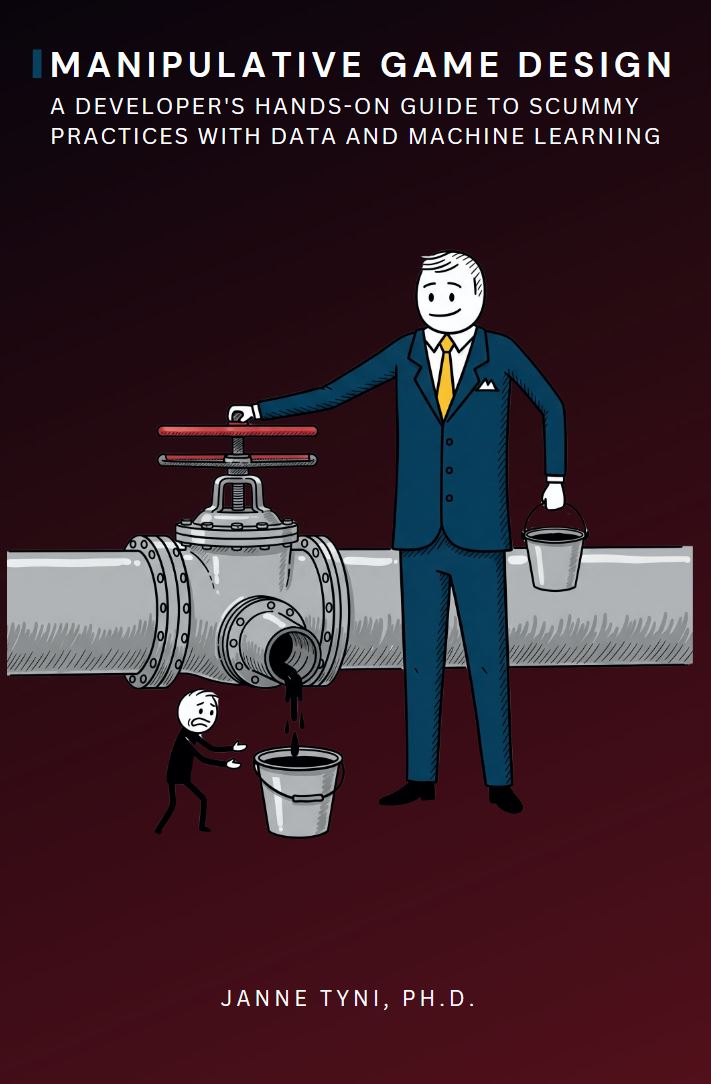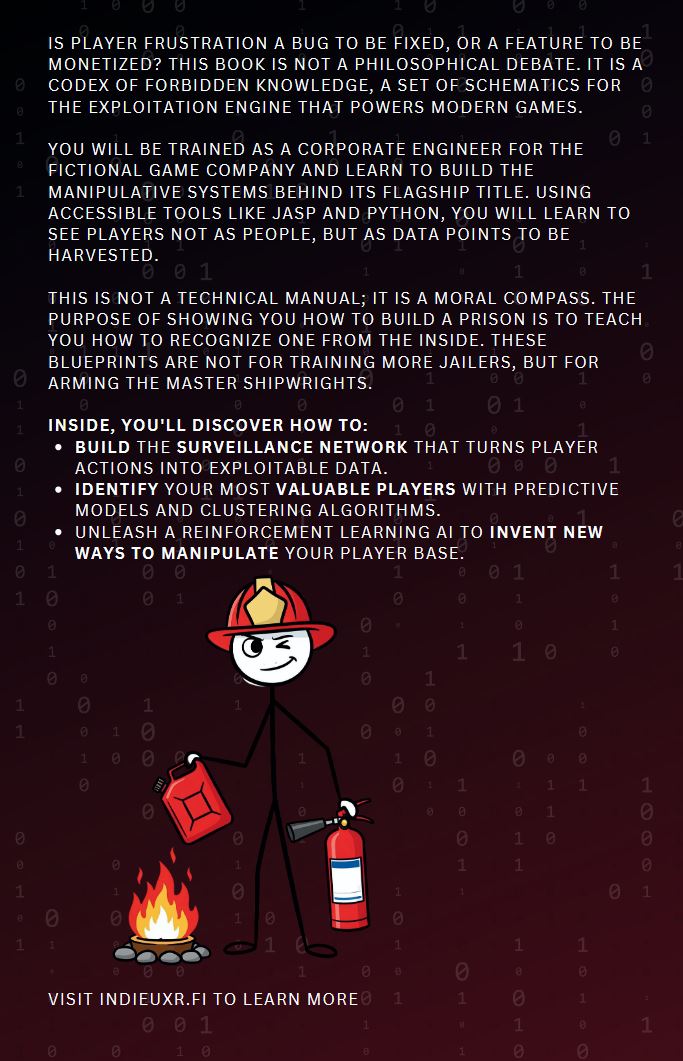Contents
Manipulative Game Design
A hands-on guide to psychological manipulation in games—how it works, why it's built, and how to fight back.

This is not a book about bugs, balance, or best practices. It's a field manual for the dark art of behavioral exploitation—how games are engineered to generate frustration, dependency, and monetization. Through immersive, step-by-step walkthroughs, this book shows how these systems are constructed in the real world using data science, UX psychology, and corporate incentives.
The book is built like a simulation. You are placed inside a fictional game company and taught to build the very systems you're meant to question, giving you the tools to recognize and resist them as a developer, critic, or player.
What You'll Learn
- How every click, hesitation, and quit event becomes psychological telemetry.
- Why the most effective manipulations are statistically proven through A/B testing.
- How reinforcement learning systems auto-tune Skinner Boxes for maximum retention.
- How "choice architecture" creates the illusion of freedom while steering behavior.
- How frustration is engineered—then sold back to the player as a paid solution.
- How economic scarcity is artificially created to drive in-game purchasing urgency.
- How companies justify all of it through KPI spin and "whitewashed" metrics.
Tools You'll Use
This isn't a theory book. You'll actually build the systems yourself—simulating analytics pipelines, training churn prediction models, and clustering player behavior using modern, accessible tools:
Python
For cleaning, tagging, and structuring player event logs into actionable datasets.
JASP
A no-code stats platform for running logistic regressions, clustering, and prediction modeling.
Machine Learning
Including K-Means, churn predictors, and reinforcement loops to tune monetization.
Statistical Framing
Learn how to make manipulative systems "look successful" using metrics.
Inside the Blueprints
Each section builds toward a complete behavioral control stack. You will learn to design and implement:
- Surveillance Design: Capture "digital exhaust" to identify player vulnerability moments.
- Automated Segmentation: Group players into monetization archetypes like "cash cows" and "grinders".
- Behavioral Prediction: Forecast who is about to churn and who is about to convert.
- Storefront Engineering: Personalize pricing and offers dynamically based on player frustration.
- Economy Weaponization: Use scarcity and inflation to create monetizable resource bottlenecks.
- Statistical Justification: Use data significance to overrule ethical objections with numbers.
- Reinforcement AI: Train reward systems that auto-optimize for maximum retention and spend.
- Language Manipulation: Learn how stakeholder reports reframe manipulation as "engagement".
Psychological Fallout
Beyond systems, this book examines the long-term psychological damage of exploitative design, including:
- How games systematically replace intrinsic fun with obligation and burnout.
- The emergence of "digital hoarding" and engineered scarcity anxiety.
- How personalization becomes surveillance—and why players can feel it.
- The four-stage PR pattern of manufactured outrage and apology.
Book Covers

Front Cover

Back Cover
Provide Feedback
Have you read an early copy? Your feedback is crucial for making the final version of this book as strong as possible. Please share your thoughts.
Take the Feedback SurveyAbout the Founder

Janne Tyni, Ph.D.
This work is part of IndieUXR's ongoing research into ethical game design and player psychology.
Get in Touch
Curious how this could work for you? Book a free, no-pressure chat to explore the possibilities for your project.
Contact